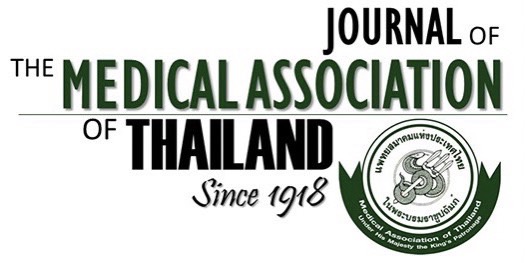Fluorescence In Situ Hybridization Method in Isolated Single Nuclei extracted from Paraffin-Embedded Hepatocellular Carcinoma Tissues
Anchalee Tantiwetrueangdet MSc*, Ravat Panvichian MD**, Pattana Sornmayura MD***, Koset Pinpradap BSc***, Surasak Leelaudomlipi MD****
Affiliation : * Research Center, Ramathibodi Hospital, Faculty of Medicine, Mahidol University ** Division of Medical Oncology, Department of Internal Medicine, Ramathibodi Hospital, Faculty of Medicine, Mahidol University *** Department of Pathology, Ramathibodi Hospital, Faculty of Medicine, Mahidol University **** Division of General Surgery, Department of Surgery, Ramathibodi Hospital, Faculty of Medicine, Mahidol University
Background : Genetic analysis using the fluorescence in situ hybridization (FISH) method applied to intact
tissue sections of formalin-fixed paraffin embedded (FFPE) tissue is well known to be relatively difficult.
The frequent technical problems include unsuccessful hybridization as a result of poor probe penetration,
excessive probe requirement, excessive background, auto-fluorescence, and overlapping or incomplete
nuclei. These problems lead to absence or insufficiency of fluorescent signals, resulting in an inaccurate
analysis. Formalin-fixed paraffin embedded tissue can be analyzed either as intact tissue sections or as a
suspension of disaggregated, but intact, nuclei. Intact tissue sections have the advantage of preserved tissue
architecture and morphology but have the intrinsic disadvantage of poor probe penetration, overlapping or
incomplete nuclei and auto-fluorescence, accordingly reducing the accuracy of fluorescent signals evalua-
tion.
Objective : To present the effective FISH method applied to isolated of single nuclei and the procedures for
isolation of a single nuclei from formalin-fixed paraffin embedded tissues of hepatocellular carcinoma.
Materials and Methods : Ten paraffin-embedded blocks of hepatocellular carcinoma tissues from the depart-
ment of pathology, Ramathibodi hospital, Thailand were studied. Isolated single nuclei were extracted from
10-(cid:31)m sections of paraffin-embedded blocks of hepatocellular carcinoma tissue and hybridized with alpha-
satellite centromeric DNA enumeration probes for chromosomes X (CEP X, spectrum green) and satellite III
for chromosomes Y (CEP Y, spectrum orange). The signal of, at least, 200 interphase nuclei were counted from
each specimen.
Results : The efficacy of this method has been evaluated in 10 formalin-fixed paraffin embedded tissue of
hepatocellular carcinoma. The results showed bright, planar and an easy to score signal.
Conclusion : FISH procedure described here is particularly suitable for retrospective studies of genetic aber-
ration applied to formalin-fixed paraffin embedded tissues.
Keywords : Fluorescence in situ hybridization (FISH), Isolated single nuclei, Formalin-fixed paraffin embed- ded tissues, Hepatocellular carcinoma



